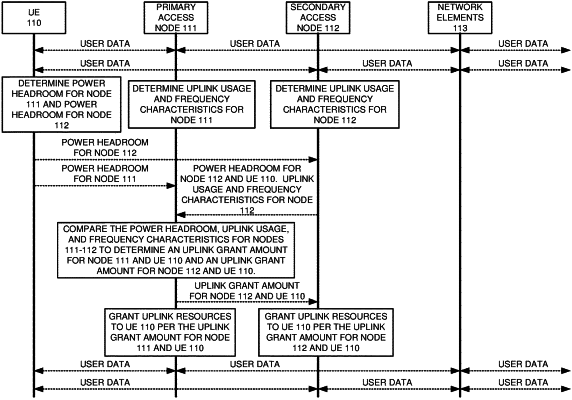| CPC H04W 72/1268 (2013.01) [H04W 52/14 (2013.01); H04W 52/365 (2013.01); H04W 52/42 (2013.01); H04W 72/23 (2023.01)] | 20 Claims |

|
1. A method of operating a wireless communication network to serve User Equipment (UE), the method comprising:
a primary wireless access node receiving signaling that indicates:
a primary power headroom and a primary uplink usage for the UE when transmitting to the primary wireless access node; and
a secondary power headroom and a secondary uplink usage for the UE when transmitting to a secondary wireless access node; and
in response to receiving the signaling, the primary wireless access node determining a primary uplink grant and a secondary uplink grant for the UE based on a primary channel size for the primary wireless access node, a secondary channel size for the secondary wireless access node, the primary power headroom, the secondary power headroom, the primary uplink usage, and the secondary uplink usage;
the primary wireless access node transferring the secondary uplink grant to the secondary wireless access node;
the primary wireless access node wirelessly transferring the primary uplink grant to the UE, wirelessly receiving primary user data from the UE based on the primary uplink grant, and transferring the primary user data; and
the secondary wireless access node receiving the secondary uplink grant from the primary wireless access node, wireles sly transferring the secondary uplink grant to the UE, wireles sly receiving secondary user data from the UE based on the secondary uplink grant, and transferring the secondary user data.
|